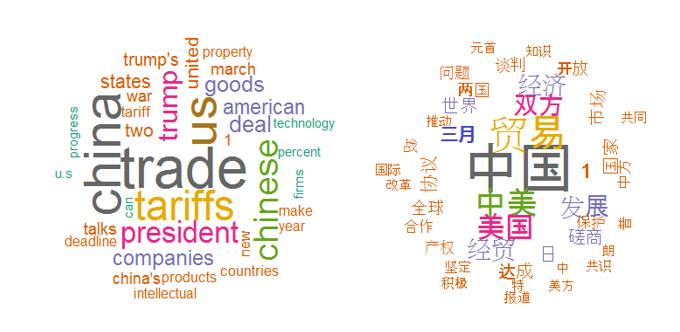The trade war (trade talks) between the US and China started in March of 2018. Intensity of the trade talks increased until the G-20 summit in Argentina on December 1st, 2018. After the two presidents met, they announced a moratorium in regard to trade issues like tariffs on certain products, intellectual property, market access, etc. and set a three-month negotiation period. The tariffs on agriculture products, such as soybeans and pork, etc., are one of the key issues that both sides aim to secure a deal for. Due to different perspectives and standpoints, there are some varying attitudes from the US and China.
The latest update on the trade war timeline by the Peterson Institute for International Economics is that the two countries started a new round of talks in Washington on February 19th. Deputy-level talks will be followed by higher-level discussions, beginning on 21st. China's Vice Premier Liu He will lead his country's delegation, to meet with the US team led by the U.S. Trade Representative Robert Lighthizer. The talks are aimed at securing a new deal before further US tariffs are imposed on March 1st, the deadline which was set when President Trump postponed planned tariff rate increases on $220 billion of goods there were to take effect January 1, 2019.
We collected the announcements and news in two languages (Chinese and English) from mainstream media in the two counties to explore how the governments and public treat the trade war. For China, the news was gathered from the government official website (www.gov.cn), Xinhua News Agency, People’s Daily Online, and Sina News. For the US, all the information was gathered from BBC, CNN, Fox News, Washington Post, Voice of America and The Economic Time. Data were collected from May 20th, 2018 to February 14th, 2019. Text mining method using R studio was applied.
The plot below shows the key words (which showed up more than 25 times within the text data sets) in two languages. The shared words in both languages are “China”, “Trade”, “US”, “Two counties”, “March 1st”, “Trump”, “war”, “intellectual property”, “deal”, “talks”, “Chinese”, “American”, and “United States”, with descending order. For the US, the less common words are “tariffs”, “president”, “progress”, “goods”, “percent”, “technology”, “deadline”, “firms”, “china’s products”, “make”, and “companies”. For China, the less common words are “knowledge”, “market openness”, “negotiate”, “economy”, “promote”, “international”, “development”, “together”, “global”, “collaborate”, “positive”, “firm”, “consensus”, “protect”, and “reformation”. These “less common” words for both countries didn’t mean “unique”. They may have been mentioned from both sides but didn’t appear with the same frequency.

Looking at these words from both sides, the overall goals of this trade war are similar. In English, the words are more talking about details, like “china’s products”, “tariff”, “firms”, etc.; while in Chinese, these words are more describing in general, using a verb or an adjective, such as “negotiate”, “global”, “collaborate”, etc. Both sides are willing to reach consensus, though it is hard to resolve some “very difficult issues”, said by BBC News at February 15th, 2019. The negotiations will be continuing in the U.S. "We feel that we have to make headway on some very, very important and very difficult issues," said top US trade negotiator Robert Lighthizer.
We will conduct a future analysis after March 1st, 2019, using the same text mining method, and re-collect the news from the same sources.

